Organic Chaga Extract Capsules
$27.00
Organic Chaga Extract Capsules
What is Chaga? Understanding Its Unique Nature
Chaga, scientifically known as Inonotus obliquus, is a parasitic fungus that predominantly grows on birch trees, particularly in cold, northern climates such as Siberia, Canada, and northern 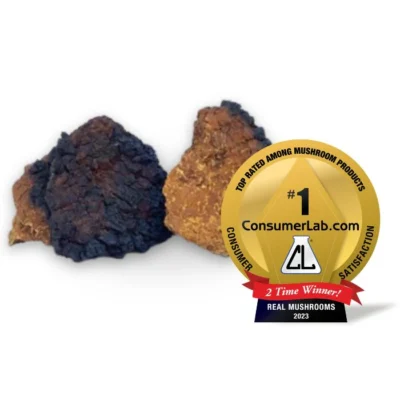 Europe. Unlike traditional mushrooms, which typically display a more recognizable fruiting body, chaga manifests as a dark, irregularly shaped canker that can be mistaken for a deformity of the tree. This unique manifestation is a result of its growth patterns, where the fungus typically penetrates the tree bark, forming a complex relationship with its host.
Europe. Unlike traditional mushrooms, which typically display a more recognizable fruiting body, chaga manifests as a dark, irregularly shaped canker that can be mistaken for a deformity of the tree. This unique manifestation is a result of its growth patterns, where the fungus typically penetrates the tree bark, forming a complex relationship with its host.
Chaga’s growth is favored by specific environmental conditions, including cooler temperatures and the presence of certain tree species, particularly **birches**. The dark, hardened exterior of chaga is rich in melanin, which protects it from ultraviolet rays and allows it to thrive even in harsh conditions. Its internal structure is softer and filled with a plethora of nutrients, contributing to its medicinal properties. All these characteristics classify chaga not just as a product of decay but as a robust organism engaged in a symbiotic relationship with birch trees.
The physical attributes of chaga further set it apart from other fungal growths. It typically presents as a large, irregularly shaped mass, with a textured exterior that ranges from a deep brown to almost black. The inside reveals a contrasting light brown color, which is soft and crumbly when processed. Understanding its biological classification as a canker is essential for appreciating the unique nature of chaga and its complex life cycle, which emphasizes its role in forest ecosystems. As research continues to unfold, the full range of benefits and applications of chaga continues to attract attention, underscoring its significance beyond mere survival.
Nutritional Profile: The Beneficial Compounds Found in Chaga
Chaga, scientifically known as Inonotus obliquus, is a fungus that has been traditionally utilized for its extensive health benefits, primarily attributed to its rich nutritional profile. Among the various bioactive compounds present in chaga, beta-glucans stand out. These polysaccharides are known for their ability to enhance the immune response by activating immune cells, which aids the body in combating infections and diseases. The immunomodulatory effects of beta-glucans make chaga a valuable natural supplement for those looking to bolster their health.
Another significant compound found in chaga is melanin, which contributes not only to the fungus’s characteristic dark coloration but also imparts antioxidant properties. The presence of melanin enables chaga to combat oxidative stress by neutralizing free radicals, thereby potentially reducing the risk of chronic diseases and promoting longevity. Additionally, melanin is believed to support skin health, enhancing its protective mechanisms against environmental damage.
Inotodiol, a triterpenoid extracted from chaga, further enhances its appeal as a natural dietary supplement. Research indicates that inotodiol possesses anti-inflammatory and antiviral properties, thereby offering a dual benefit of immune support and the alleviation of inflammation-related conditions. Furthermore, chaga contains specific compounds derived from birch trees, such as betulin and betulinic acid. These compounds are renowned for their health-promoting properties, including potential anticancer effects. Betulin has been shown to encourage apoptosis in cancer cells while promoting overall cellular health.
Understanding the diverse array of beneficial compounds present in chaga elucidates its role as a superfood and natural supplement. Incorporating this fungus into one’s diet may support immune system health and contribute to overall wellness, making chaga a prized addition for those seeking natural health solutions.
Wild Harvesting: The Process of Collecting Chaga in Siberia
Chaga, a medicinal fungus known for its numerous health benefits, primarily thrives on birch trees in the pristine forests of Siberia. The process of wild harvesting Chaga is an intricate practice that has been passed down through generations, encompassing traditional skills and knowledge of the natural environment. Harvesters typically seek out mature birch forests, where the fungal growth is most abundant and robust, ensuring optimal quality. The uniqueness of the Siberian landscape contributes to the superior properties of the Chaga collected, as the cold climate and rich, nutrient-dense soil promote its growth.
The traditional methods of collecting Chaga involve careful inspection of birch trees for the characteristic black, irregularly-shaped conks, often mistaken for burnt wood. Harvesters utilize hand tools, such as axes or chisels, to extract the fungus while minimizing damage to the host tree. This hands-on approach ensures that the harvesting process remains sustainable; by only removing a small portion of Chaga from each tree, the longevity of both the fungus and the birch trees is preserved. It is paramount that harvesters follow ethical guidelines to prevent over-exploitation, which could threaten the delicate balance of the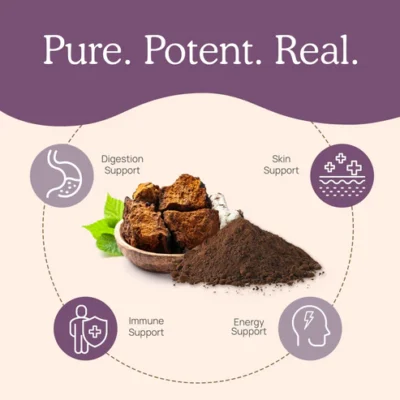 ecosystem in which Chaga flourishes.
ecosystem in which Chaga flourishes.
Sustainable harvesting practices are essential not only for the environment but also for maintaining the economic viability of local communities dependent on this natural resource. Ethical considerations in Chaga harvesting demand respect for nature, a mindset that emphasizes regeneration over depletion. Moreover, the geographical conditions of Siberia, with its rigorous climate and untouched woodlands, play a pivotal role in the purity and potency of the Chaga collected. These factors collectively contribute to the strong antioxidant properties and health benefits associated with Siberian Chaga, underscoring the importance of mindful harvesting practices.
Enhancing Bioavailability: The Extraction Techniques of Chaga
Chaga, a medicinal fungus predominantly found on birch trees in Siberia, has gained recognition for its numerous health benefits attributed to its rich nutrient profile. To optimize these advantages, specific extraction methods have been developed to enhance the bioavailability of chaga’s beneficial compounds. Understanding these techniques is essential for anyone interested in maximizing the potential health benefits of chaga supplements.
One widely used method is hot water extraction. This technique involves boiling chaga to extract water-soluble compounds, such as polysaccharides and antioxidants. The high temperature facilitates the breakdown of the fungal cell walls, allowing the beneficial compounds to seep into the water. This method is particularly effective for extracting betulinic acid, known for its anti-inflammatory and anti-cancer properties. However, while hot water extraction is efficient in capturing certain nutrients, it may not fully preserve the complete spectrum of bioactive compounds found in chaga.
Another popular extraction technique is alcohol extraction, which employs ethanol or other solvents to draw out both water-soluble and fat-soluble compounds. Alcohol has a high affinity for triterpenes and other phytochemicals, enhancing the extraction of key compounds that may not be obtainable through water alone. This method results in a potent tincture that can be utilized in various supplement forms. Nevertheless, the choice of alcohol concentration and duration of extraction play a crucial role in determining the final potency and quality.
Lastly, dual extraction methods combine both hot water and alcohol extraction, leveraging the advantages of both techniques. This approach maximizes the retention of essential nutrients, resulting in a more balanced and effective chaga extract. By utilizing both solvents, the dual method ensures that a wider range of bioactive compounds are available for absorption, promoting enhanced health benefits.
Incorporating Chaga into Your Wellness Routine
Chaga, a medicinal mushroom widely recognized for its health benefits, can be seamlessly integrated into your daily wellness regimen. Available in various forms, including teas, tinctures, and powders, chaga offers versatility for consumption. One of the most popular methods is brewing chaga tea. To prepare this beverage, use dried chaga chunks or powder. Steep approximately 1-2 tablespoons of chaga in hot water for around 15-30 minutes, allowing the beneficial compounds to infuse into the water. You can enhance the flavor by adding natural sweeteners or spices such as cinnamon.
Tinctures are another effective way to incorporate chaga into your routine. These concentrated extracts can be added to water or smoothies. Generally, a standard dosage for adults is around 1-2 droppersful per day, although it’s advisable to follow the specific instructions provided by the manufacturer. The potency of tinctures can vary, so consulting with a healthcare provider can help ensure you’re using the appropriate dosage.
Chaga powder provides yet another option, allowing for a variety of culinary uses. Incorporating chaga powder into smoothies, oatmeal, or baked goods can enhance nutritional profiles. For example, blending 1 teaspoon of chaga powder into a morning smoothie transforms your drink into a powerhouse of antioxidants and nutrients. However, it’s important to note that heat may diminish some properties, so using it in cold dishes or after cooking can help retain its benefits.
Before integrating chaga into your wellness routine, potential contraindications should be taken into account. Individuals with autoimmune disorders or those on blood-thinning medications should consult a healthcare professional prior to use. By following these guidelines, you can safely enjoy the remarkable health benefits that chaga offers.
Introduction to Chaga: Nature’s Fungal Treasure
Chaga, scientifically known as Inonotus obliquus, is a unique fungus that grows primarily on birch trees in cold climates, particularly in Siberia, Russia. Unlike traditional mushrooms that thrive above ground, Chaga is characterized by its growth as a sterile conk or canker, often resembling a dark, charred mass on the bark of trees. This distinctive appearance marks it as not just another type of mushroom, but rather a treasure of nature, harboring a multitude of health benefits that have piqued the interest of researchers and health enthusiasts alike.
Historically, Chaga has held significant importance in various cultures, especially among the indigenous peoples of Siberia. These groups have long been aware of Chaga’s potential as a traditional remedy, utilizing it for centuries to bolster their health and well-being. Its use as a herbal tonic can be traced back to ancient times, where it was valued for its purported immune-boosting properties and overall health-enhancing qualities. Traditional medicine practitioners regarded it as a vital component in promoting longevity and vitality, often integrating it into their daily herbal practices.
The unique habitat of Chaga—its preference for birch trees—contributes to its distinct biochemical composition. The fungus absorbs nutrients and compounds from its host, which are believed to enhance its health properties. Rich in antioxidants, polysaccharides, and other beneficial compounds, Chaga has drawn attention in modern times for its potential role in supporting immune function and overall health. As research continues to explore the various health-related benefits of this fascinating fungus, its historical significance and traditional uses remain essential elements of its story.
The Chemistry of Chaga: Key Compounds and Their Benefits
Chaga, a unique fungus predominantly found on birch trees, is gaining recognition for its rich chemical composition that contributes to its health-promoting properties. The primary active compounds found in Chaga include beta-glucans, melanin, inotodiol, and certain birch-derived compounds such as betulin and betulinic acid. Each of these components plays a crucial role in enhancing immune function and imparting various health benefits.
Beta-glucans are polysaccharides that exhibit remarkable immunomodulatory effects. They are known to activate immune cells, including macrophages and natural killer cells, bolstering the body’s innate defense mechanisms. The presence of these compounds in Chaga has drawn attention in research investigating their potential to lower cholesterol and assist in the management of blood sugar levels, further demonstrating their significance in overall health.
Melanin, another vital constituent of Chaga, is a natural pigment that provides antioxidant properties. Its role in combatting oxidative stress cannot be understated, as it helps protect cells from damage caused by free radicals. This protective action is particularly important for supporting a robust immune system and reducing the risk of chronic diseases.
Inotodiol is a triterpenoid that possesses anti-inflammatory and anticancer properties. Research indicates that it may inhibit cancer cell growth and enhance the healing process by modulating immune responses. Furthermore, Chaga contains betulin and betulinic acid, compounds derived from birch trees that have been linked to various health benefits, particularly for their potential to promote cellular health and combat harmful microorganisms.
Incorporating Chaga into one’s di
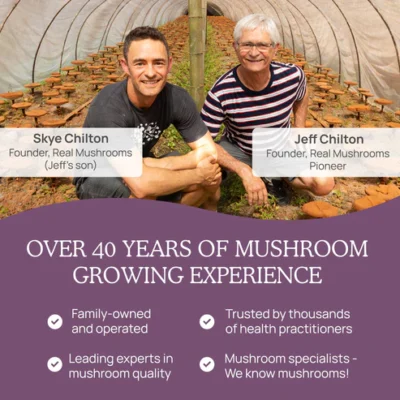
et may harness these compounds’ collective benefits, providing a powerful ally for those seeking to enhance their immune system and overall wellness. Understanding the chemistry of Chaga emphasizes its importance not just as a supplement but as a potential cornerstone of health-promoting practices.
Sourcing and Sustainability: The Wild Harvesting of Chaga
Chaga, scientifically known as Inonotus obliquus, is a fungus that predominantly grows on birch trees in cold climates, especially in Siberia. The sourcing of Chaga involves careful consideration, as it is essential to balance the demand for this highly sought-after medicinal mushroom with sustainable harvesting practices. Overharvesting can lead to detrimental effects on the birch forests where Chaga resides, thus the importance of ecological conservation cannot be overstated.
The process of wildcrafting, or the ethical and sustainable harvest of Chaga, requires knowledge of the local ecosystem. Harvesters must identify mature, healthy birch trees that can support Chaga growth while ensuring that the fungi are harvested in a manner that does not harm the host tree. This involves techniques such as cutting the Chaga in a way that stimulates natural regrowth, allowing the fungus to continue its life cycle and ensuring its availability for future harvesting.
Moreover, organizations and eco-conscious harvesters advocate for the preservation of birch forests, emphasizing the need for sustainable practices in Chaga extraction. These practices include limiting the amount of Chaga harvested from each tree and adhering to harvesting regulations set by local forestry departments to protect both the Chaga and its birch hosts. By following such practices, the delicate balance between harvesting this unique fungus and maintaining the health of ecosystems is achieved, promoting longevity in both Chaga availability and forest health.
In essence, the wild harvesting of Chaga requires an appreciation for the natural habitats from which it is sourced. Understanding these processes and the importance of sustainability enables us to enjoy the benefits of Chaga while ensuring that its natural environment remains intact for future generations.
Enhancing Bioavailability: The Extraction Process of Chaga
The extraction process of Chaga mushroom is critical for enhancing the bioavailability of its beneficial compounds. Chaga, known scientifically as Inonotus obliquus, possesses a rich profile of bioactive constituents, including polysaccharides, triterpenes, and antioxidants. However, these compounds are often locked within the tough, woody texture of the fungus, making extraction crucial for maximizing their therapeutic potential. Two predominant methods of extraction are hot water extraction and alcohol extraction, each with distinct advantages that optimize the effectiveness of Chaga’s constituents.
Hot water extraction is a widely used technique that involves boiling Chaga in water to draw out its soluble compounds. This method is particularly effective for extracting polysaccharides, which are key for their immune-boosting properties. When the Chaga is simmered for an extended period, the high temperature breaks down cell walls, allowing the beneficial components to leach into the water. The resulting liquid is often a rich, dark tea that not only tastes pleasant but provides a concentrated source of Chaga’s health benefits. This method is favored for its ability to create a digestible form of Chaga that the body can readily absorb.
Alternatively, alcohol extraction employs ethanol or other types of alcohol to dissolve a wider array of phytochemicals, including triterpenes, which are known for their anti-inflammatory properties. This method enables the extraction of both polar (water-soluble) and non-polar (oil-soluble) compounds, resulting in a more comprehensive spectrum of benefits from the Chaga mushroom. The tinctures produced through alcohol extraction concentrate the active ingredients in a manner that facilitates their absorption and utilization in the body.
In conclusion, understanding the extraction methods for Chaga is vital to unlocking its full potential. By employing hot water or alcohol extraction techniques, we can enhance the bioavailability of this unique fungus, ensuring that the immune-boosting benefits are accessible and effective for those who consume it.
Incorporating Chaga into Your Diet: Usage and Recommendations
Chaga, a notable medicinal mushroom renowned for its extensive health benefits, can be seamlessly incorporated into your daily diet. It is available in various forms including powders, teas, and supplements, each offering unique ways to enjoy its immune-boosting properties. To effectively integrate Chaga into your nutrition, understanding these forms and their usage is crucial.
Chaga powder is one of the most popular forms, often utilized in smoothies, oatmeal, or baked goods. A typical recommendation is to start with a dosage of 1 to 2 teaspoons daily and gradually increase it based on your comfort level. For those who prefer beverages, Chaga tea is a delightful option. To prepare it, simmer a tablespoon of Chaga chunks or powder in water for about 20 to 30 minutes. This not only extracts its beneficial compounds but also creates a warm, comforting drink that can be enhanced with sweeteners or spices like cinnamon.
Additionally, Chaga is available as supplements, which may be appealing for individuals seeking convenience. When choosing supplements, it is essential to ensure they are sourced from reputable manufacturers to guarantee quality and potency. Adhering to the recommended dosages on the product label is vital, as excessive intake could lead to potential side effects such as digestive issues or interactions with medications.
It is highly advisable for individuals with existing health conditions or those taking medications to consult a healthcare provider before adding Chaga to their regimen. Gaining insight into its potential interactions can aid in maximizing its benefits while minimizing health risks. By thoughtfully incorporating Chaga into your diet, you can tap into the remarkable properties of this unique fungus, enhancing your overall wellness.
Read more about mushroom
Shop now
Be the first to review “Organic Chaga Extract Capsules” Cancel reply
Related products
Lions Mane Extracts
Chaga Extracts
Chaga Extracts



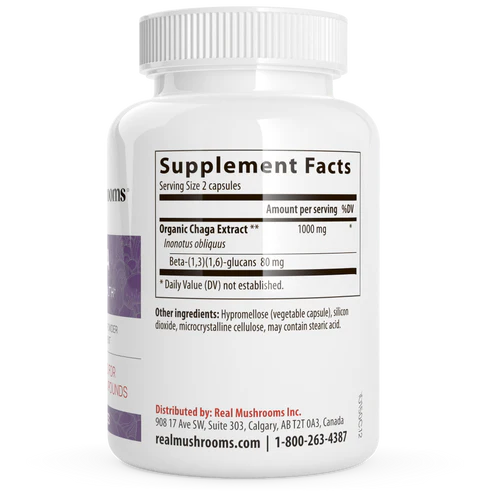
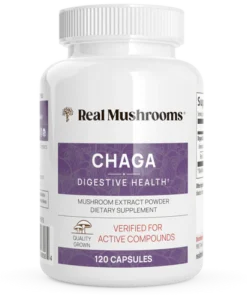




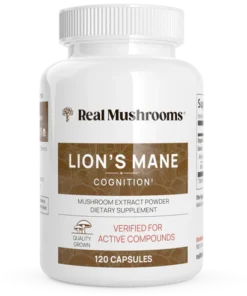


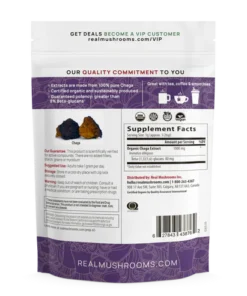

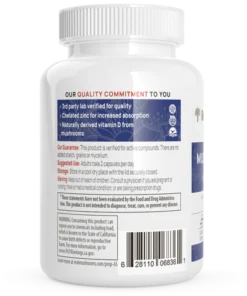
Reviews
There are no reviews yet.